Predator Free Wellington: Taking a collective leadership approach to build a social movement.
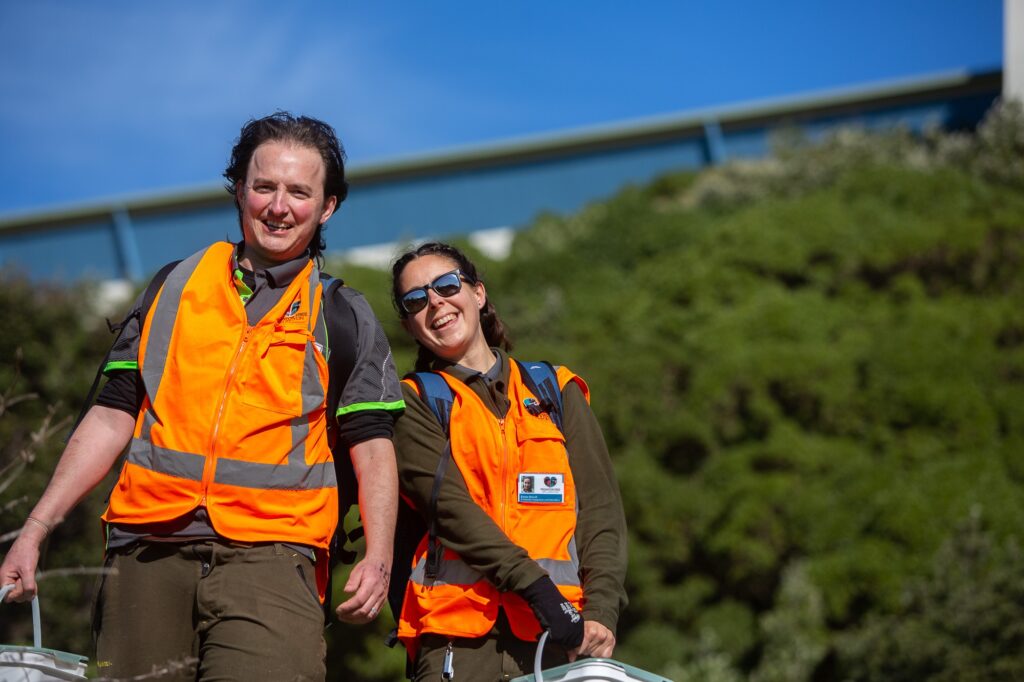
From the get-go, this initiative has been driven by the understanding that the vision of a predator free Aotearoa needs to be strongly rooted in, and driven by local communities. The ever-growing map of participating Predator Free groups, big and small, across the country is testament to the strength and diversity of the Predator Free movement.
James Willcocks, Predator Free Wellington
“People are our biggest challenge in conservation, but they are also our biggest chance. Because if we can have 212,000 pairs of eyes and ears on the case, that’s all the people living in Wellington, that’s the most effective protection network you could ever have. That has been a massive learning for us.”
Across Aotearoa, communities are taking action to enable the aspirational goal of Predator Free 2050. The aim is to completely eliminate the predators most dangerous to our unique biodiversity (rats, stoats, and possums have been identified to be the most damaging of introduced predators). Collaborative efforts are underway at national, regional and local levels to make change happen.
Building on shared local visions
“Taiao – environment at particular places” is one of seven key principles in the national strategy which is enabling ‘bottom up’ innovation and tailored responses. Predator Free Wellington is one of many initiatives underway, their goal to make Wellington the first predator-free capital in the world. They’re moving along at high pace and have nearly completed the first phase of their plan, namely eradicating pests on, and returning native birds to, the Miramar Peninsula. To achieve this, Project Director James Willcocks and his team have built a tight network across the resident community, getting everyone involved in setting up bait stations and traps across the Peninsula.
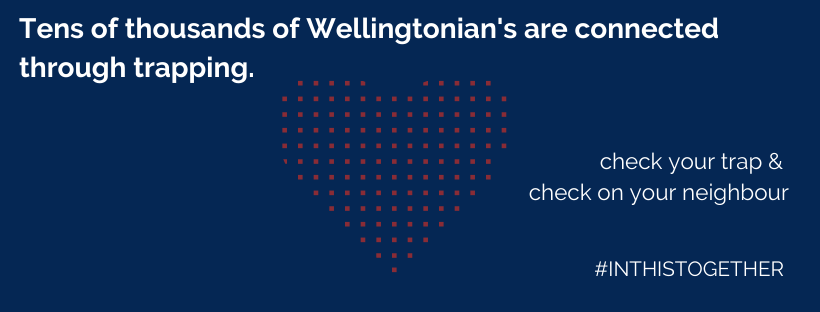
“We designed this project from the bottom up with the community at the centre. Our vision is for both our communities and our native biodiversity to thrive. You cannot have one without the other.”
Read more
Collaborative Local Leadership
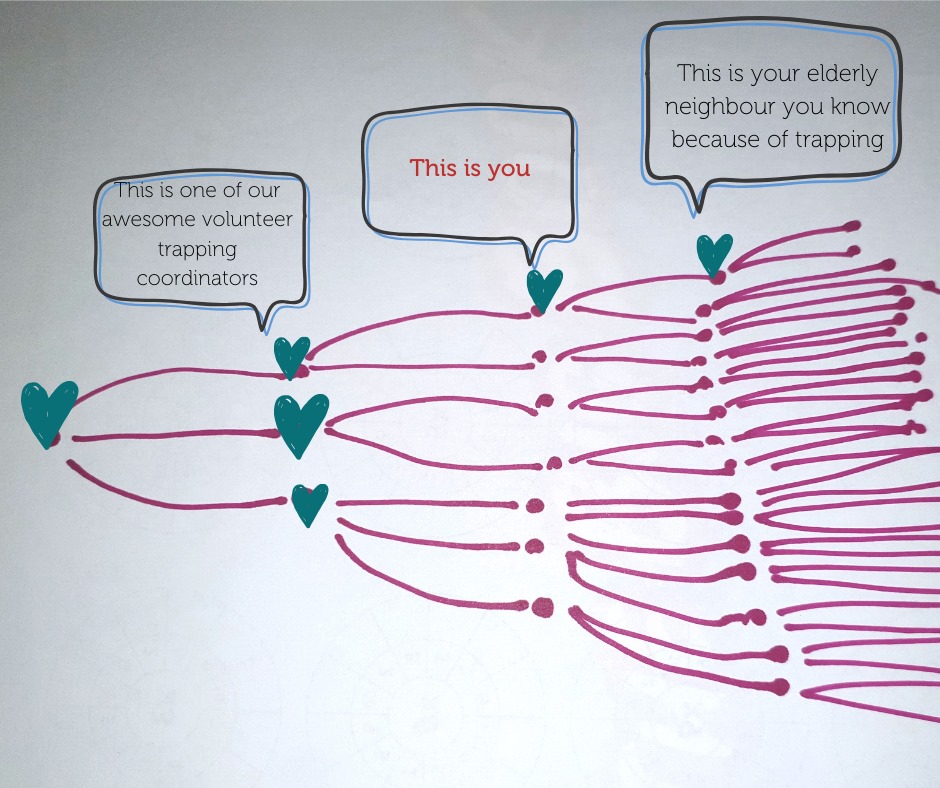
“We really want to create a sense of team and connection for the people. And it’s really worked, neighbours are talking to neighbours about this project, and it’s really driving this huge sense of commitment for the people of Miramar.”
James adds that his team has been absolutely blown away by how engaged the community has been in the project, proving that collective local leadership and the relationships behind it, are the key to success.
“We wanted to kick off a massive social movement. It is not about ‘doing to’ people in that sense – community leaders have stepped up and reached out because they want to do this, and we have then provided them with the expertise, resources and equipment – we’ve given them traps – and they have taken these back into their communities.”
To eradicate the pests, traps and bait stations have to be set up every 50 metres across the grid cast over the area. On Miramar, that is a minimum of 8,000 devices in an area where 20,000 people live:
“Our Engagement Field Officers have gone to knock on every door to talk to people about the project and by doing that, we have received 99% permission to set up traps on private land. This takes a great deal of trust – we cannot take this lightly: you really become part of peoples’ lives when you are visiting them every week. It’s huge social interaction and a huge opportunity for real social outcomes in this space.”
Diversity and inclusivity enable social outcomes
The ability and willingness to look beyond a traditional, westernised conservation model is a key factor in enabling participatory, community-led action. James stresses how much he has learned by working so closely with the diverse neighbourhoods in Wellington:
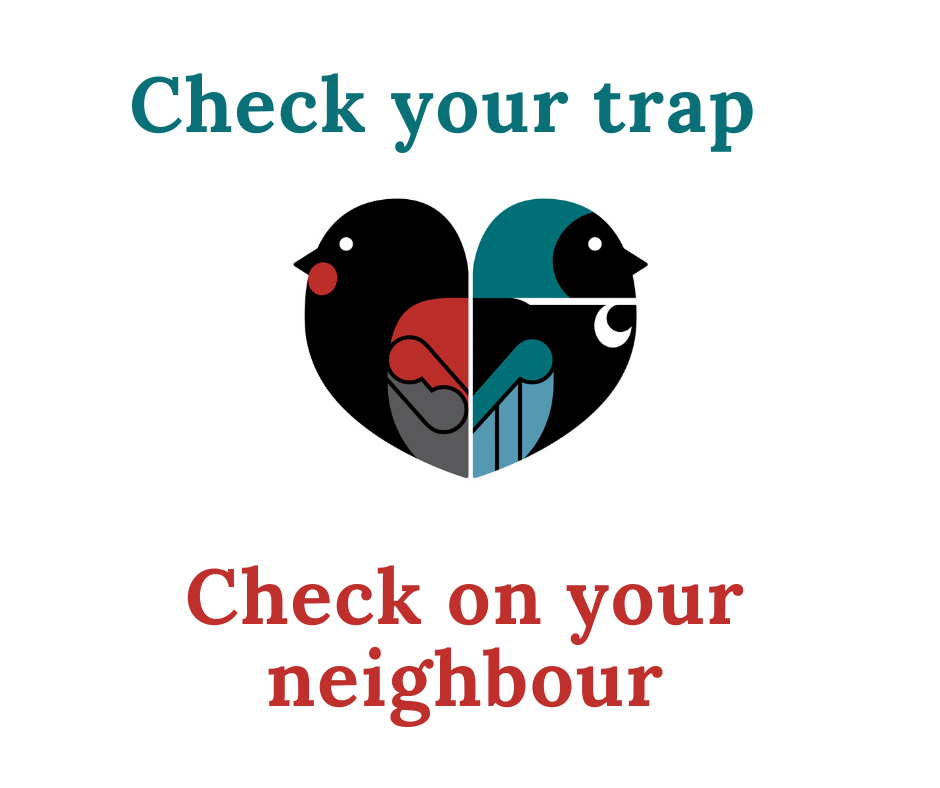
“Another massive learning for us has been working with marginalised communities or communities that can find themselves isolated, and not going in with a westernised, scientific approach. It is crucial to listen to different communities’ needs and perspectives to really get their buy-in to the project. We all care about the same thing but we will get there in different ways.”
James recalls an inspiring success story with “this fantastic guy who had spent a bit of time on the wrong side of the train tracks” some years ago. This person got involved in the cause because his family could not sleep as they had rats in their hot water cabinet. Having great success with their traps, this family then went on to play an instrumental role in linking James’ team with other neighbours and parts of Miramar who would likely not have felt included in a standardised, top-down approach.
Local action as part of the national vision
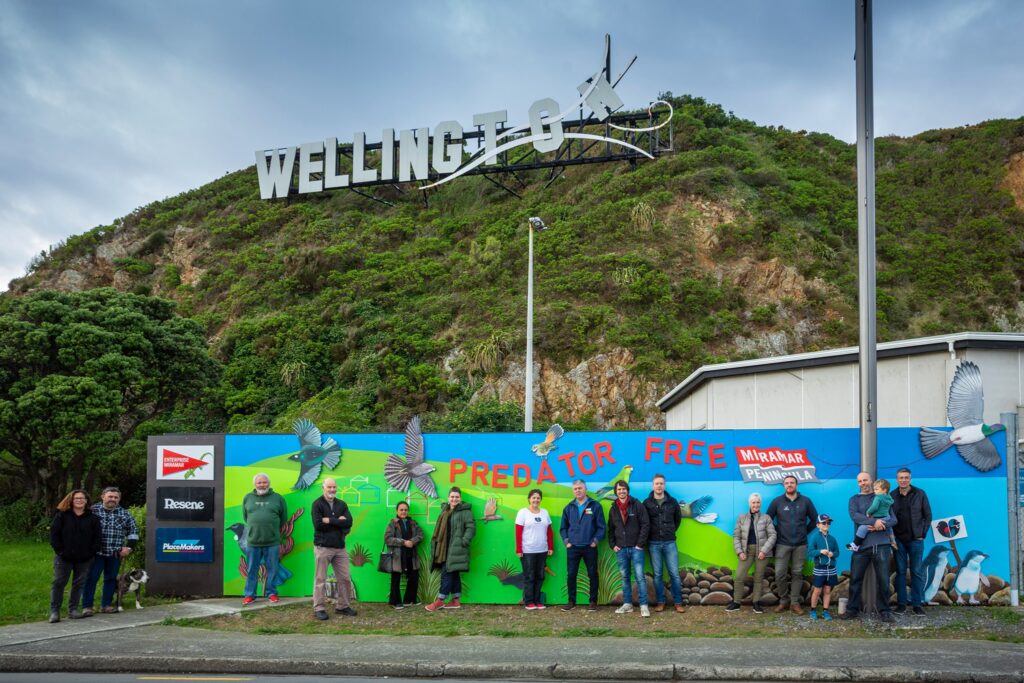
“Making Wellington predator free, that’s not my story to tell. It’s the story of the city of Wellington and its people.”
For a successful movement, James agrees that it’s all about thinking outside the box and to go ahead with holistic and broad approaches with the community at the lead, in order to find a way of working together that enables everyone involved. Having a clear goal in mind, and one that is close to home, also supports connection:
“Predator eradication is one part of the rich tapestry of conservation. Setting up a trap is a simple, straightforward action that people can take, and it links them to the broader global goal of preserving and conservation. Tackling big topics like Climate Change can seem impossible for the individual, but if the community can work together and focus on a tangible outcome through direct action, everyone can contribute. We are all part of nature, and everyone has something to contribute.”
Wharekahika: Coming together to protect one another
In Wharekahika (Hicks Bay), the community response to COVID-19 started several weeks before Lockdown already, as an abrupt halt to Chinese log exports led to a surge of unemployment around the East Coast in February. Knowing that whanau would need support with food and other essentials, Ani Pahuru-Huriwai (Trustee of Te Aroha Kanarahi Trust, and Executive Director at Tairawhiti REAP) turned to her networks. She approached philanthropic, iwi and government contacts for funding, Gizzy Kai Rescue for food and her trusted kaimahi to help coordinate the ordering, dispatch and delivery of kai and care packages.
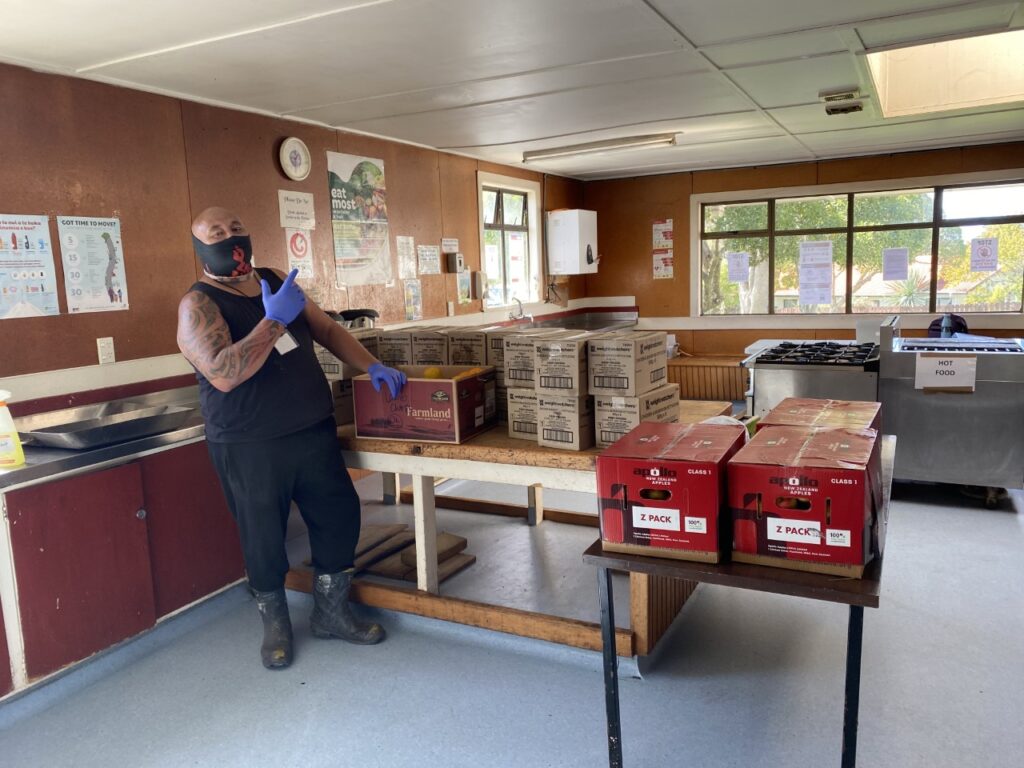
We were able to supply 70 homes with food in the first week of Lockdown, rising to 100 homes in the second week. “
“We were able to supply 70 homes with food in the first week of Lockdown, rising to 100 homes in the second week. This grew to 200 households weekly when our Te Araroa whanau joined us. We had two people ringing homes twice a week to identify needs, and 10 volunteers doing deliveries – in some cases they were driving two hours to reach whanau in really remote places – gravel roads, crossing rivers, stock and subsidence were regular hazards.”
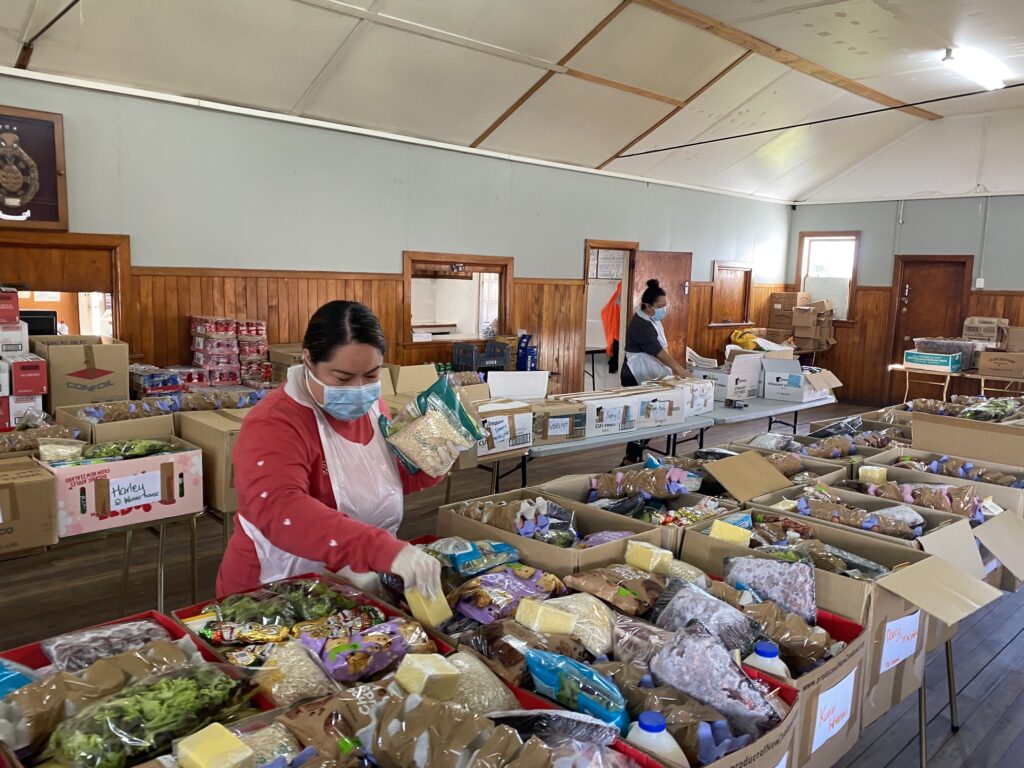
We had two people ringing homes twice a week to identify needs, and 10 volunteers doing deliveries to 200 households every week.”
Hapu and community-led action to minimise risk
But in order to fully protect the community, more, and quite different work was needed during the rahui (lockdown). Despite government messages to restrict travel, tourists were still entering the area prior to Lockdown. In response to this (and following the example of the checkpoints established in Apanui), a hapu roadside checkpoint was set up on State Highway 35 to remove that risk to their community. This was spearheaded by Tina Ngata and Ani, with support from the local hapu Te Whanau a Tuwhakairiora.
Other hapu and communities from Te Araroa to Tolaga went on to establish checkpoints themselves, along with the neighbouring iwi Te Whanau-a-Apanui. The goal was clear: “keep the virus out, and our whakapapa safe”.
“Keep the virus out, and our whakapapa safe.”
Good communication between the checkpoints was essential to achieve this goal, and the checkpoint team made sure to connect daily with others around the Coast, as well as with police and central government. Te Aroha Kanarahi Trust moreover contacted the national Motorhome Association with the request to ask their members and visitors not to travel to the East Cape, as the population was at high risk of contracting the virus. “The Motorhome Association President sent out our email to over Ninety thousand members asking them to respect our request. A popular tourist destination in the area is the East Cape lighthouse, and the landowners closed access to it to help our cause. We were very grateful for such a strong level of support.”
Read more
However the checkpoint team did much more than talking to tourists and closing off the area. “At the checkpoints themselves we were able to pass on information and updates to locals, and even to the authorities who may not have heard it otherwise.” For example, Te Aroha Kanarahi Trust organised a mobile health unit to come out to the top of the Tairawhiti region, which was gratefully received by the community:
“We had 200 people come out to be tested (for COVID-19) – and that was because of all the educating being done at the checkpoints in Wharekahika and Te Araroa.”
ANI PAHURU-HURIWAI
Changes made to last
Things are now slowly returning to a ‘new normal’ on the coast – but some measures would have been most welcome to stay. “During the lock-down we had a doctor here every day, now we are back to limited services. We had four police officers, now we have one.” Many members of the community may have wished for the Level 4 restrictions to continue, as they created such a strong sense of community. People felt grateful for the weekly awhi and manaaki they received during the rahui.”
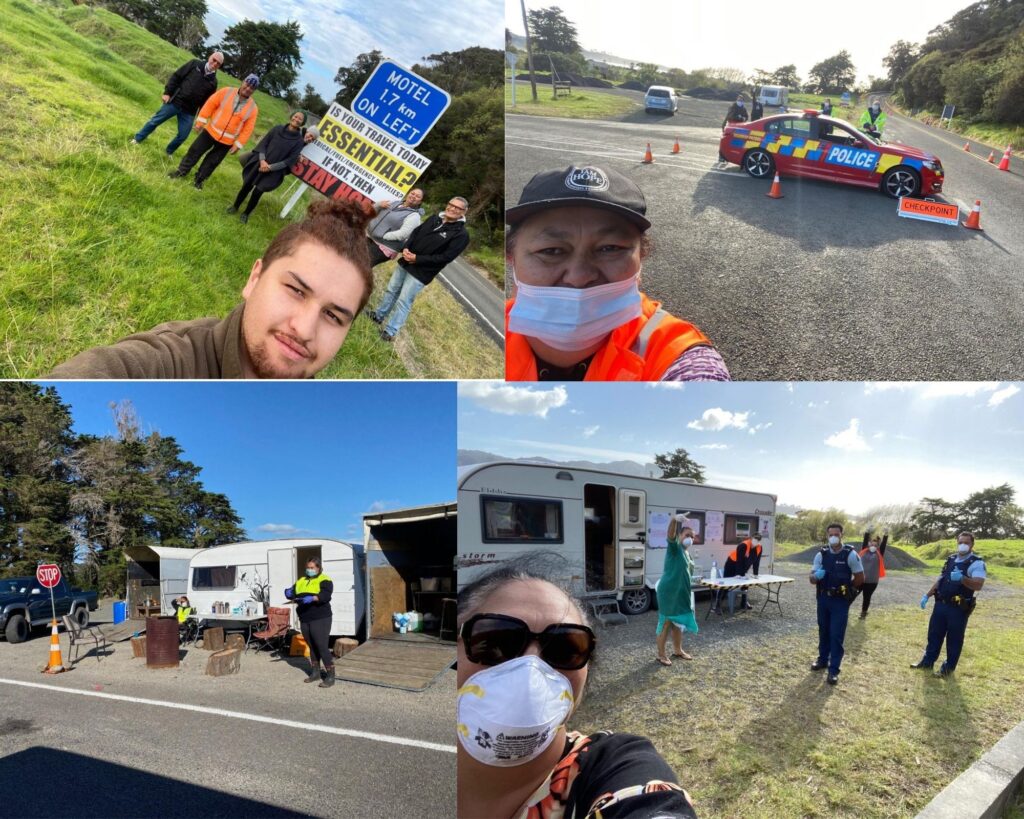
People felt grateful for the weekly awhi and manaaki they received during the rahui.”
Local police officers joined the checkpoint teams for extra support.
To honour this kaupapa and to move forward, the Wharekahika community are now actively working to increase their resilience. “ A food sovereignty plan is being developed, with different teams responsible for kai moana, mara kai, hunting, food processing and so on. We also realised that having local residents certified as wardens would be a great support for the community, so a Maori warden training programme was initiated and completed, with funding provided by Te Puni Kokiri”.
To thank those who stepped up and tirelessly volunteered their time and resources over the Rahui, the community organised a big Whanau Day and offered koha to the helpers: a recognition that without them, this strong and united response to the crisis would not have been possible. Ani says she is very grateful to the many sponsors, funders, sheep stations and food production companies who provided support.
“Thanks to them, we were able to ensure that even the most isolated whanau in our community were fed and able to keep safe in their bubbles during the most trying of times.”
Kore Hiakai Zero Hunger Collective
Resilience takes courage. And trust.
Coming together as a community to brave a storm, such as the Covid-19 pandemic, requires a whole lot of both.
All over Aotearoa New Zealand, social service agencies, social enterprises, food industries and community-led initiatives have been increasingly responding to food insecurity. With the economic effects of Covid-19 taking hold from early on, many new community-led initiatives popped up to ensure local people are fed.
One example of this immediate locally-led action has been the Sikh Community who fed 15,000 families across Aotearoa,in an enormous group-effort over two weeks in April. Starting with the Takanini Gurudwara Sikh temple community where volunteers cooked enough meals within 24 hours to feed several hundred families. These families were given a food package to get them through the following few days. For many, this would have been the first time they would have reached out for help and queued at a foodbank in order to feed their families.
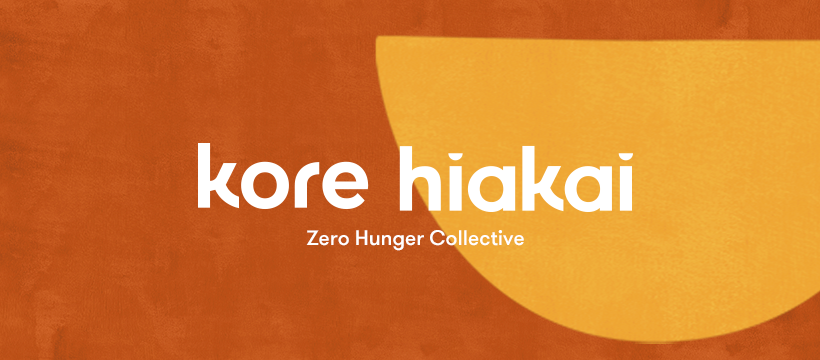
“We must address the various causes across all levels of society to combat food poverty across the country now.”
Tric Malcolm, Pou Ārahi Executive Officer for Kore Hiakai Zero Hunger Collective says the growing number of communities and organisations stepping up to meet the increasing demand for food support is fantastic. “But without a systematic approach, this growth may lead to greater dependency. We must address the various causes across all levels of society to combat food poverty across the country now.”
Building from strengths
The Kore Hiakai Zero Hunger Collective was established in 2019 with the ambition to tackle this problem through a joined-up national strategy to end food poverty in New Zealand.
Read more
While initial conversations about building a coalition started about three years ago, organisations from all parts of the food ecosystem came together for three open-space hui in 2019. Gathering perspectives on how to develop a strategic and systematic approach of working together, these hui identified three core pou, or pillars, as essential to combating food poverty:
- 1. Structural change
- 2. Mana enhancing contributions and actions, and
- 3. Sustainable systems for long-term solutions.
A shared vision for systems change
These pou are now the core values of the six organisations that have joined forces under the Kore Hiakai umbrella: the City Missions of Auckland, Wellington and Christchurch, the NZ Council of Christian Social Services, Salvation Army New Zealand, and the Vision West Community Trust.
Requiring a collective solution that all levels of society can get behind and that will enable individuals, has been the driving force behind Kore Hiakai. The Collective builds on the individual partner strengths to develop a big-picture, long-term and sustainable solution. Weaving together the wisdom and skills of the partners to form a strong, united approach, the Collective can act as enablers for community organisations, and as connectors: for example, establishing more direct collaboration with the Ministry of Social Development, building a two-way exchange on needs, issues and ways forward, has been important progress. “Traditionally, relationships have focused around contracts and funding decisions, without a direct exchange of information and discussion about the broader policy issues arising,” Tric says.
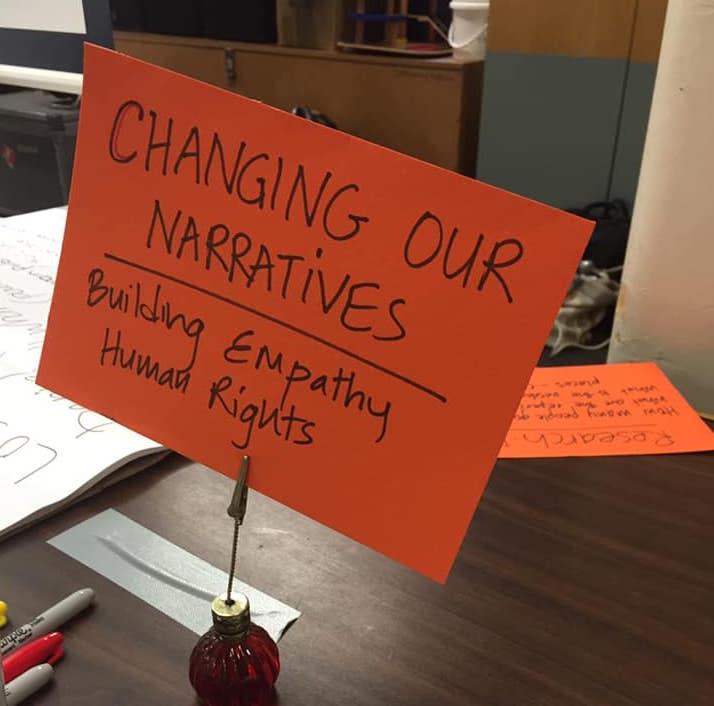
We’re now able to put options to the government as to what long-term strategies may be.”
“If decisions are informed by people who are actually working on the frontline of the crisis, they are much more likely to result in lasting changes,” adds Tric. “We want to move beyond the food parcel model. Combating poverty is ultimately about community and connection. And this is what we are working on, together.”
Having strong relationships and working from a place of trust meant the organisations could immediately jump into action when Covid-19 hit. Both Tric and Kelvin Moffat, General Manager Service and Contracts Management at the Ministry, point out that having worked together for three months before the country moved into Lockdown enabled a much more effective and collective response, says Tric:
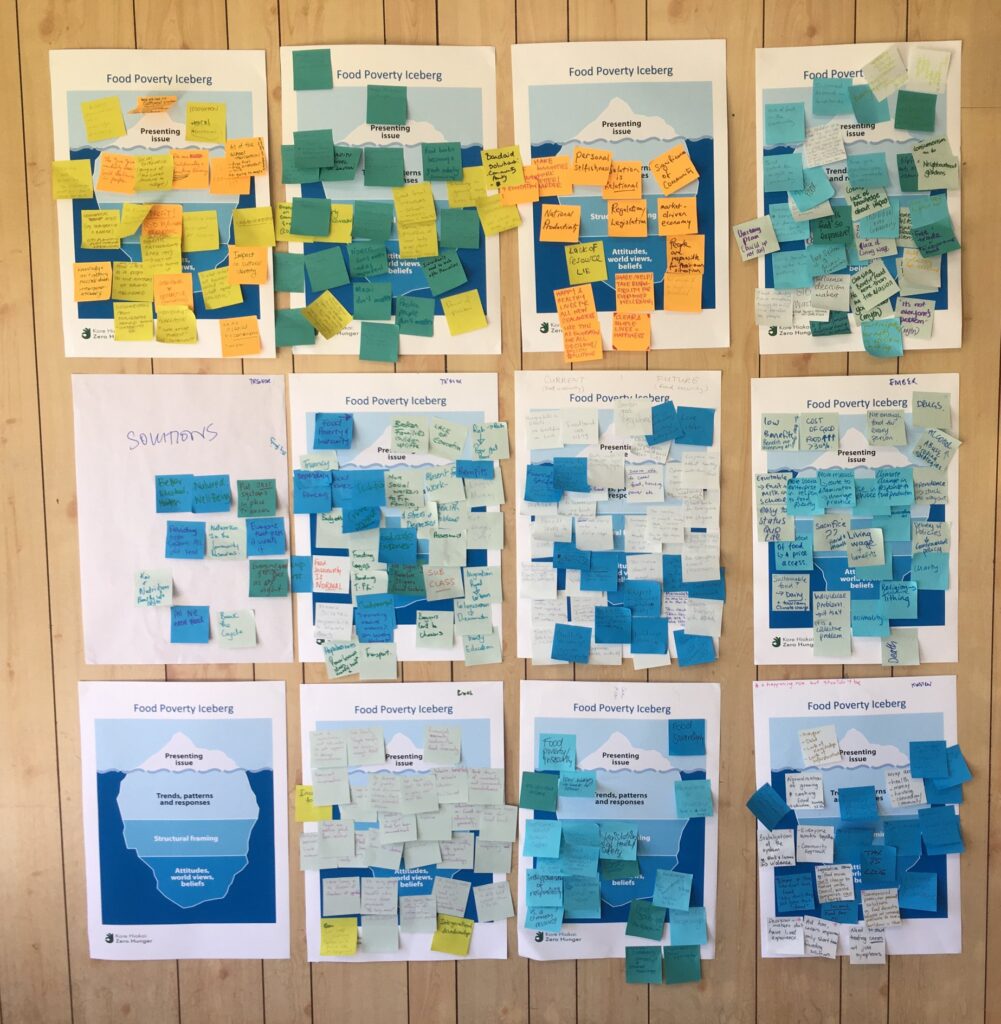
“What would usually take 12 months now took us three weeks.”
And this way of working together is here to stay: There will be “no back to normal” as in how things were before, agree Tric and Kelvin.
To find out more about Kore Hiakai, please visit their website or contact them via email: korehiakai@nzccss.org.nz
Project C-19: Collaboration across boundaries
The Nelson Whakatū community is no stranger to a Civil Defence Emergency.
Hit by severe weather and floods in 2018, devastating bushfires in 2019, and now, Covid-19.
Within days, a new collaboration between community-led initiatives and organisations dedicated to helping the most vulnerable was formed. Project C-19 is a collaboration between Volunteer Nelson and Neighbourhood Support Nelson, both very active and visible community organisations in the region and funded by Nelson City Council .
Grow from shared local visions
The goal was clear; to support the organisations working with the most vulnerable in the community. To predict which needs might arise and be most crucial, the Project C-19 team developed a work exchange survey to help identify those gaps and needs, as well as to share their strengths, resources, and capacities. This evidence saw the organisations quickly self-organise and reassign their shared capability to respond directly to what they had identified: an increased need for food and housing support, as well as for strong and direct communication – not only between the organisations themselves, but also to the community so that the right source of support can be found for everyone’s individual needs and questions.
C-19 Project Manager Dawn Gauthier says she was amazed how immediately Nelson’s active support networks kicked into action:

“The organisations were so well equipped that within days, helping hands were reaching out to those who were stretched. The proactive and empathic approach of community organisations like Age Concern was impressive.”
READ MORE
Rather than waiting for people to reach out themselves, volunteers and staff at Age Concern Nelson picked up the phone to personally check in on older people in their network. However, what quickly became evident was that a stronger communication link was needed between those working ‘on the ground’ and those facilitating the government’s support measurements during the pandemic.

Project C-19 Communication channels.
Work with diverse people and sectors
To get a clearer picture of what decisions were being made, while providing a link back into this community’s needs and capacities, Project C-19 established a strong link directly into the Civil Defence Emergency Management team.
By participating directly in the daily CDEM Welfare team meetings, Dawn has been able to gather the necessary information first-hand and moreover provide insights into the day-to-day challenges local social service organisations were facing. It also enabled quick, accurate updates back into the community. The result being locally led responsive change across their organisations closing in on those gaps.
Learn by doing
The information is moreover proactively shared in Project C-19’s weekly newsletters, offering a valuable resource to the community and making CDEM’s mahi more visible and accessible.
In addition, Dawn and her team have organised a weekly, “short and sharp” Zoom-meeting with representatives of the CDEM team and Nelson’s community organisations, where questions and updates can be shared directly. Part of these weekly forums is a brief survey checking in on how everyone is feeling about their organisation’s workload, about what has been going well, and where people have noticed gaps.
Build from Strengths
Housing and food supply proved to be one of the biggest challenges during the Lockdown period. The amount of food vouchers distributed by the Nelson Tasman Pasifika Community Trust in the first few weeks alone was “massive”, says Dawn. With the economic impacts of Covid-19 expected to more fully hit our communities over the next few months, Dawn expects this trend to continue.
“Many people may have difficulty understanding that they need help. Some may need help for the first time, having never considered accessing a food bank or social services like mental health support until now.”
Dawn stresses that it is crucial to remove the stigma around topics such as unemployment, homelessness, and mental health problems, and to make access to help and resources as easy as possible.
A focus on positivity and hope paired with strong community networks and a whole lot of appreciation are just some of the strengths and driving force behind this initiative. The collective community responses like Project C-19 are spearheading stronger links between governing bodies, social services, community initiatives, and iwi-led responses such as Manaaki Twenty who are also working closely with the CDEM team, and the people in the community who need support. Dawn says there is hope and determination that these new ways of working will take a lasting hold.
“There is definitely a desire to not just go back to the way things were before, but to try and make things work better for a lot more people as we move forward.”
You can find out more about Project C-19 here, read their weekly newsletter here, and sign up to these updates here.
The Community Kindness Movement.
It’s not uncommon for us to feel overwhelmed by the amount of content that’s put in front of us on a daily basis, whether it be on the TV, social media, or other digital platforms. But for a suburb of West Auckland, social media has been the voice for what Heather Tanguay describes as “The Community Kindness movement” of Glen Eden.
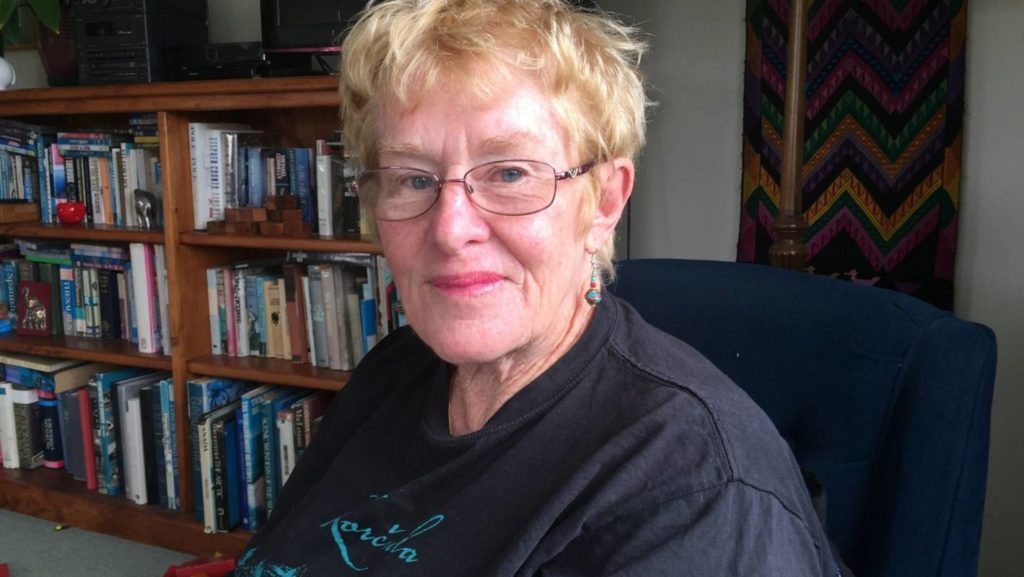
What Heather is referring to is a Facebook Group – Glen Eden Pātaka Free Pantry Group – which was set up in late 2018 as a community-led initiative championed by the Glen Eden Residents Association (GERA).
SHARED LOCAL VISION
“We knew there was a great need for Pātaka in our community. We didn’t know exactly how we were going to make it happen, and that’s why we put it to the community on Facebook.”
The response was incredible. Among offers of free building, donated materials, and locations to host the Pātaka, it was clear that the community of Glen Eden – with a population of over 7,000 people – was willing to bring this project to life.
BUILD FROM LOCAL STRENGTHS
Another GERA member was instrumental in building the initiative’s online presence. From there, she and Heather received many offers of support and from there a sub-committee with another five members was established, based on their relevant skills.
First, some research was carried out. The Pātaka Kai initiative originated in South Auckland and has since grown into a national movement. Heather credits the Pātaka Kai website with having all the information they needed to get started.
“It was wonderful to be able to look at their resources. How did they did it, what things we had to have in place, what things we needed to consider… council regulations and things… just about everything we needed to get this project up and running.”
With a small amount of funding they were able to buy the materials for five Pātaka which were set up in all corners of Glen Eden; attached to fences of people’s homes who’d offered their property as a Pātaka host.
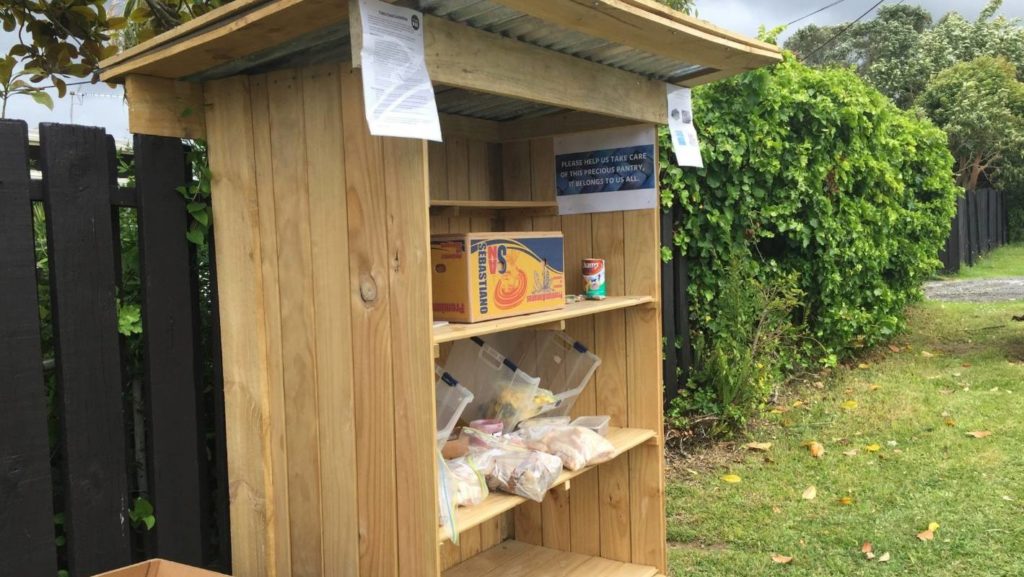
LEARN BY DOING
“Right at the beginning we didn’t have doors for the pantries, so the birds were getting in and eating the bread, making a mess… but we didn’t have the money to do anything about it. Then out of nowhere a local flight attendant made five pantry doors. She is away with work for weeks at a time, but this is still her community. Isn’t that lovely? I apologised to her and said we couldn’t afford to reimburse her, but she didn’t expect anything. It was quite overwhelming.”
Heather says she and the team also had to learn to let the community go about their giving, taking and trading from the Pātaka in their own way.
“Generally speaking everyone is mindful of others – not taking too much, not leaving it empty – and if there is bad behaviour people usually communicate about it in the Facebook group.”
The bad behaviour, Heather says, is usually people clearing the Pātaka out; taking everything.
“It happened to us at the beginning, but there’s no judgement. You just never know a person’s situation. We heard of one woman who was accused of clearing a Pataka… but we also knew from the school principal that she was a P addict trying to shake her addiction, and she had kids at home.”
With rising housing prices and stagnant wage rates, any family could be at risk – no matter their socio-economic standing.
“An example to consider is a young man who had to give up his job to look after a sick wife and child, paying huge rent. He was desperate, and his wife could not receive a benefit as she was not a New Zealander. The Pātaka helped him provide some food prior to Christmas.”
It’s not just local neighbours donating food to the Pātaka. In the relatively short time they’ve been up and running, the sub-committee have worked to get assistance from local business owners including bakeries and supermarkets who would otherwise be throwing unwanted produce into landfill.
“We have been able to demonstrate through the Pātaka, that what has been perceived as food waste can be avoided and can be positively redirected to people in need.”
Their community spirit doesn’t stop there.
“We would love to see a gardening project in Glen Eden. Veggies and fruit are out of the question for families on a tight budget.”
With willing volunteers and available garden space nearby they are hopeful that 2020 is the year they can bring this part of the project to fruition.
“It hasn’t all been plain sailing, but this is our home. A place in need. And besides, I don’t do hobbies. I do community.”
Co-design of Poutokomanawa – A place for whānau in the heart of Manurewa
For the renovation of Manurewa Plunket Family Centre in 2017, Plunket took this opportunity to actively work with Auckland Council’s ‘The Southern Initiative’ (TSI), and partner with local whānau to achieve the aspirations of the community, to make progress towards more positive outcomes for tamariki and their whānau.
TSI brought to this project their vast knowledge and experience in developing innovative experiences within South Auckland, with whānau at the centre of co-designing and testing solutions. Plunket brought staff and volunteer insights, community and parent connections, and Plunket data and research. This was a chance for Plunket to use a whānau-centred approach, with whānau voice, strengths, needs and lived experiences being the primary driver.
In engaging with whānau, Plunket and TSI found whānau want a safe and welcoming space they could visit during the day while away from home, as an effective way to connect with other whānau. These drop-in centres are places for parents whose home environments may be inadequate, unhealthy or unsafe – these are the whānau needs Plunket were committed to addressing.
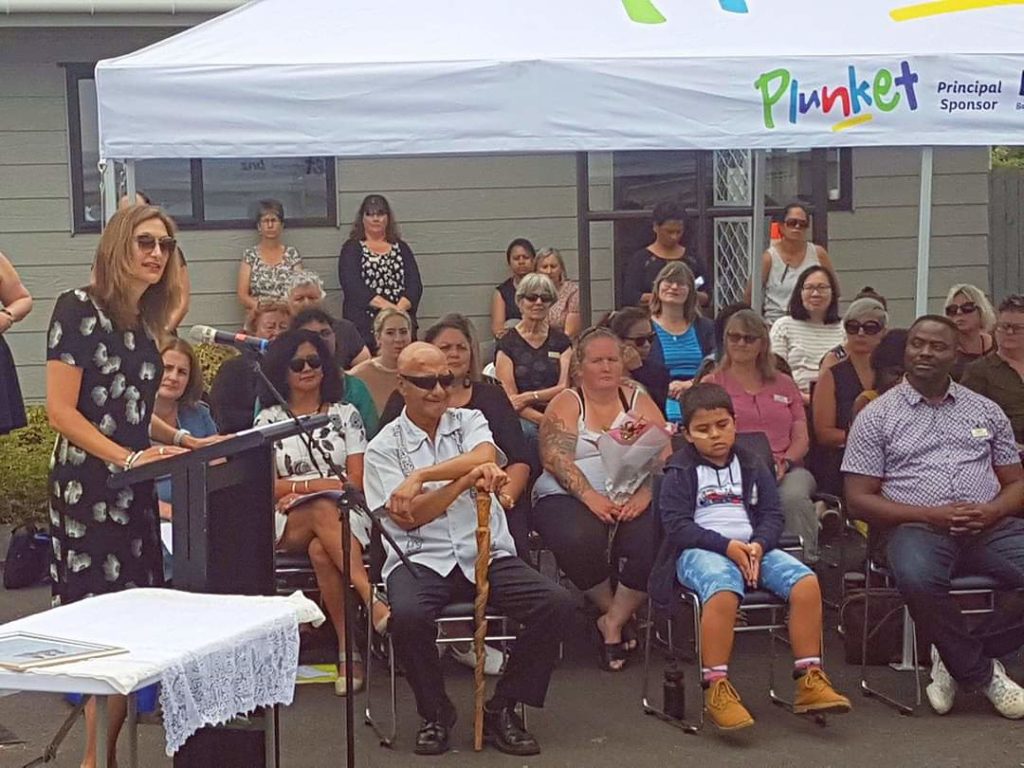
What’s different?
The co-design of Poutokomanawa incorporated a whānau centred co-design approach that is based on Māori methodology and principles. The core principles of this approach are:
- Manaakitanga – hosts whānau in a way that empowers them, and removes barriers for participation
- Whānaungatanga – builds meaningful relationships in culturally appropriate ways and engages in ways that form trust
- Tino Rangatiratanga – gives whānau autonomy over how and in what way they will participate
- Mana – Ensures a balance of power and acknowledges that whānau are experts in their own lives
- Ako – Learnings are mutually reinforced
The process had four stages:
- Frame – clarifying the challenge and key focus areas
- Explore – developing new perspectives and insight by connecting with whānau
- Imagine – generating new ideas with parents and stakeholders
- Test – testing new ideas and prototypes in a low cost, low risk way
The key to this shift was identifying the challenge or the need and thinking creatively about the range of possible responses.
We engaged with local whānau not only in Manurewa Plunket but also in local venues such as the supermarket and library, with a clear aim of linking with whānau who Plunket are not connected with. The whānau priorities identified for creating spaces that enable parents to nurture and create better outcomes for their children were about having:
- A welcoming space
- A closer connection between whānau and staff
- A safe place for tamariki where parents can have a break
- Facilities for baby changing and washing, and accessible kitchen facilities.
Outcomes
In March 2019 whānau were invited to offer feedback. They described the centre as bright, peaceful and positive, and as a place of healing and learning, with better visibility and accessibility. Further improvements were suggested by whānau and these have been built into ongoing quality improvement.
Feedback from Plunket staff identified that more whānau are attending group sessions and clinics, so consequently, more clinics are now available at the centre. This has also built staff capability: they are more open to new ideas and support creative and innovative approaches. The co-design process has gained attention from other Plunket teams who are looking to renovate their space
The outcomes that emerged from the co-designing of Poutokomanawa included:
- Whānau are empowered to co-design and decide what should be offered in the space.In utilising a whānau-centred approach the whānau needs are met.
- Whānau are more connected to support networks in the wider community of Manurewa.
- Plunket staff, and staff work alongside whānau in Manurewa have gained a better understanding of the importance of whānau lived experience and strengths
- Plunket’s Manurewa Family Centre is a warm and welcoming space that meets the needs of whānau.
Key Learnings
In this project, Plunket staff worked in new ways by prototyping on site and supporting the integration of whānau voices into the design of the renovation.What is also evident is that whānau are keen to contribute to the design and use of such spaces, and whānau are critical to making the space work to meet their needs and can help with strategic and operational challenges. Staff also require capability-building around whānau-centred design and practice.
What now?
The new focus for the Manurewa Plunket team are:
- To sustain the positive changes and develop deeper relationships with whānau in order to assist whānau to meet their immediate needs, reduce stress, and build confidence and capability.
- For staff to focus on whakawhanaungatanga on site, including regular team connections and to continue having conversations with whānau, the Manurewa team, with Plunket more widely and with external stakeholders
- To keep connecting whānau with each other and with community supports, encouraging Manurewa whānau ‘champions’ to feel ownership in the space, to welcome and support other whānau.
This initiative has provided an example for Plunket staff to co-design with whānau as partners, to achieve their aspirations.
We have learned what is required to move from spaces that services are delivered into, to spaces that hold and nurture whānau.
We are about to apply a co-design approach with whānauto the redesign of Powhiri Avenue in Whangarei and Kingston St in Auckland.
Building Wellbeing The Manawa Way
Community-led development approaches take many different shapes and forms.
When we think of group fitness classes, some words that come to mind might be: cardio, strength, schedule and training. But when we spoke to Carnation Hetaraka of Manawa Community Wellness – a project that started out as community group fitness classes – the words we heard included connection, heart, sustainability, inclusion, culture. Needless to say, we were intrigued to find out more.
“Usually inside a gym setting you’re in for an hour, then you’re out the door. But we wanted to retain a connection.”
Manawa – meaning heart – was an important word included in the name given to the project by a group of mothers who had a shared vision.
“Originally it did start off as Manawa Community Fitness. But we realised that people were there for more than a programme. They were staying at the end. Talking… sharing. Manawa is community. Manawa is people.”
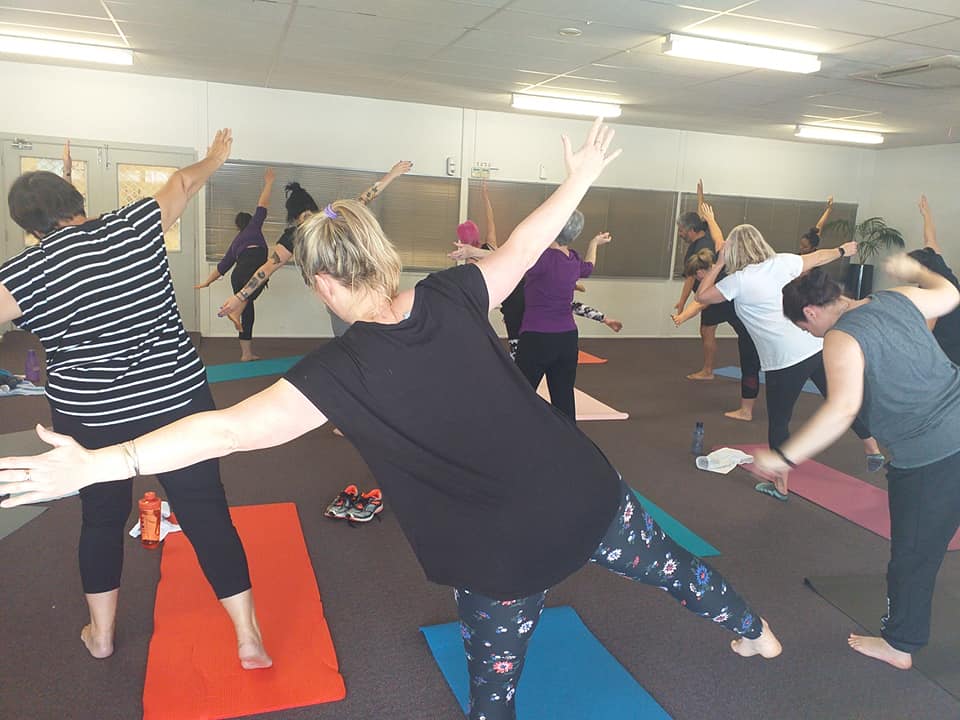
SHARED LOCAL VISION
Hetaraka and her five colleagues realised that people were taking much more than just exercise from the classes, and willingly embraced the idea of growing the movement as a community rather than a series of weekly classes.
“For us it’s about connection. To each other and to our culture. Most of the people who come along identify as Māori and they have kids… so we manage that by keeping them entertained. It makes it easier for people to come along if they can bring their kids.”
Evolving naturally at first into group hang outs following classes, it was the memories of childhood games, activities and a connection to their shared Māori culture which saw the Manawa leadership grow their vision.
“We wanted to find other ways of embracing our culture. It’s grown from everyone staying for morning after class to incorporating Māori rhythm and music into our fitness and wellbeing classes.”
Along with the inclusion of Te Reo Māori, an acknowledgement of everyone’s individual iwi and whakapapa, and a commitment to respond to the needs of their wider community, Manawa Community Wellbeing is an initiative that delivers exactly what they set out to.
BUILD FROM STRENGTHS
Heteraka wasn’t always a keen gym-goer. But after living through some hardships in her life she found reprieve in going to the gym.
“A friend of mine actually dragged me along. It wasn’t ever my thing. But after a while I got into a routine, and I ended up training as a rookie instructor.”
Together with some fellow mums who had similar goals to enrich their whanau, Manawa Community Wellbeing took shape in early 2018, and the group worked to their strengths to develop programmes that each of them felt passionate about delivering. They now have, on average, 30 people attending each class regularly.
“Gyms don’t want just anyone, they want people who are heavily into fitness. But that’s not us. Our mantra is ‘purposeful movement for everybody’”.
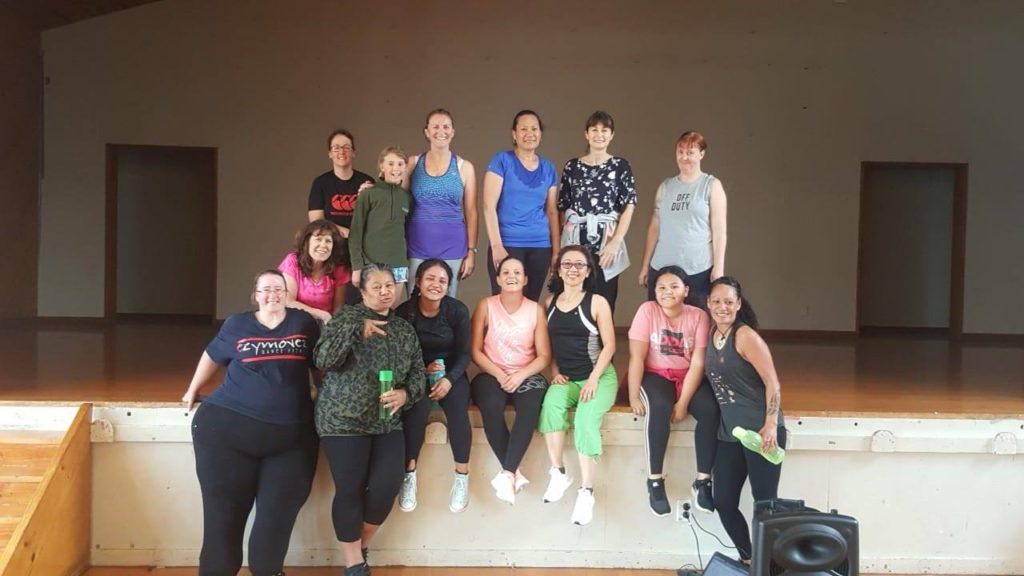
WORK WITH DIVERSE PEOPLE AND SECTORS
As all community-led development projects tend to experience, this initiative too had its challenges. The team were tasked with finding an appropriate space that was fit for purpose, suited the budget, made it easy enough for people to get to, and meant they have room to adapt their programmes to suit requirements.
“We definitely had fears about how we were going to find a space and make this happen. We had to research venues, review conversations, look at council bookings, find a space that felt right… all of those things. Between us we’re all really creative. We’re innovative and intuitive, and we had nothing to lose. We just wanted to get out there and make it happen.”
The first place the group hired to run their programmes presented a few challenges straight away.
“We had to book so far in advance, but we were so new. We ended up spending more time checking in with people and figuring out parking headaches. It was preventing people from bringing their children… but we promote connection. We wanted to make that possible.”
Now offering four classes, and operating across three locations in West Auckland, Manawa Community Wellbeing caters mainly to parents and caregivers – and sometimes whole whānau, since parents are welcome – who are able to bring their tamariki to classes.
The response has been overwhelmingly positive, with regular attendees saying the classes have made them feel connected to their physical and emotional wellbeing, successful, mentally refreshed, and healthy. That in itself, Coronation says, is enough inspiration to keep doing what they’re doing.
GROW COLLABORATIVE LEADERSHIP
Between the six core Manawa team members they have found that they naturally work well with each other’s strengths.
“You can’t have six people working on one thing, and we all get that. I usually do the innovation and creation, and we all share the load in a way. When we’re out networking and sharing there’s the same story and there’s clarity.”
The team uses free digital mediums to stay connected between classes, because often when they do see each other it’s not a good time to talk work things.
“We stay in touch and we see each other three times a week with classes. But when we need to chat we all make time and come together. Usually that’s a scheduled thing but we are all flexible because life just is like that sometimes, and supporting each other so that we can support our community is the most important thing.”
Heretaka explains that the wonderful thing about having a shared vision is that when they do come together, it’s still about connection first and foremost, which provides further opportunities for socialising and getting those all-important photos to share across social media.
“Ultimately this entire project is about having healthy whanau. We want them to live longer, happier lives. We all have different backgrounds, we all work full time, but that doesn’t stop us.”
The learnings of the evolution of this project have been many, but no challenge has been too great for Heretaka and her team.
“The first thing we did was to believe in what we were doing, even if the world thought we were crazy. It’s about keeping people at the centre, and keeping the love. If you’re on the right path, the rest will follow.”
To connect with Manawa Community Wellbeing, visit their Facebook page here: https://www.facebook.com/manawacommunityfitness/
Walkways and Whitebait: Good things in Greymouth
It’s been seven years since a public meeting held by Grey District Council introduced two ideas: to enhance the local estuary, and to develop the adjacent lagoon into a welcoming park and recreation area.
The project that was seeded that night responded to the agreed task at hand: to come up with ideas to encourage more visitors to stick around in Greymouth, and as well as the buy-in from community members at the meeting, the project won backing from both the council and the Department of Conservation (DOC).
Part one – enhancing the local estuary – meant creating and planting more channels in the estuary to create a thriving whitebait habitat. Arguably the animate hero of the West Coast, this idea was heartily welcomed by locals and by DOC workers who have a vested interest in the preservation and regeneration of the whitebait population.
Work began on this part of the project in 2013, and by 2018 six kilometres of new channels had been dug in the estuary, and between ten and twelve thousand plants had been put in the ground.
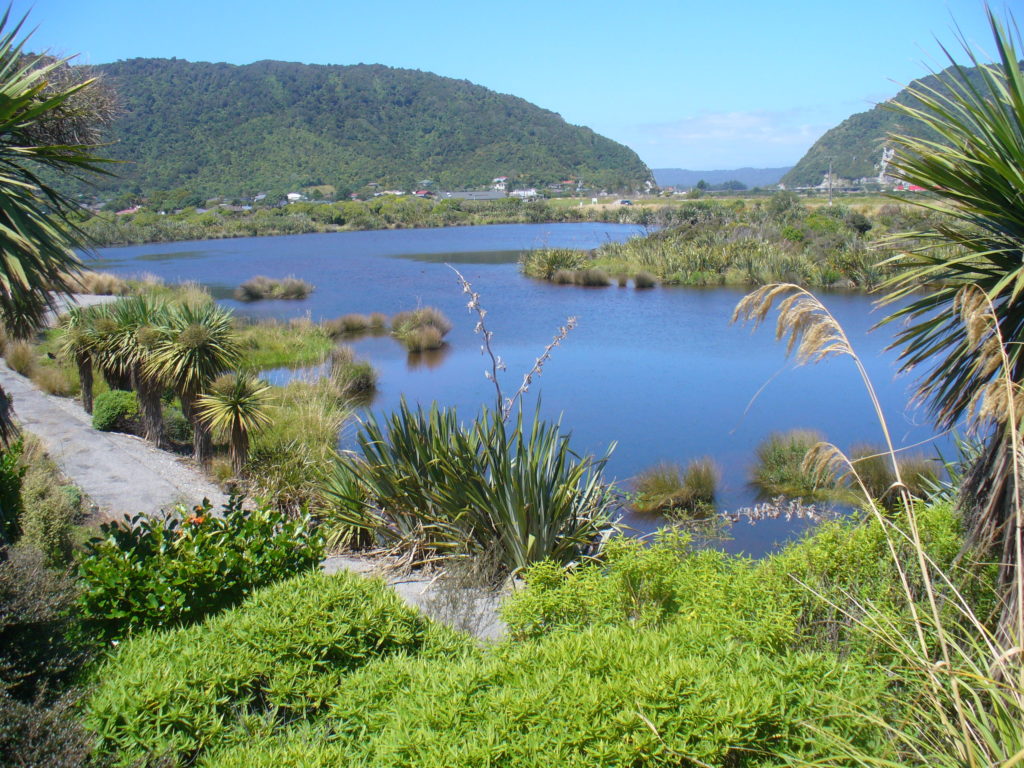
Rob Harrison, local volunteer and career land manager says, “now it’s a matter of keeping back the weeds to allow the native plants to colonise the estuary and watch the whitebait population grow.”
GROW COLLABORATIVE LOCAL LEADERSHIP
(click here to see IC resources on Grow Collaborative Local Leadership)
Rob joined forces with fellow volunteers to establish CASRA (Cobden Aramohana Sanctuary and Recreational Area) society after the council coordinator’s funding was stopped.
“When the funding dried up, we decided to make a little incorporated society CASRA, to facilitate the project and so that we could have the ability to apply for funding. It’s worked well because DOC and the council was impressed with our efforts.”
“We became the liaison agency to connect the Grey District Council and DOC. There was a plan which had been drawn up and it was essentially our job to see it through.”
CASRA is a mix of passionate locals who have a wide range of skills from landscaping to whitebaiting, and just generally want to lend a hand on the project.
BUILD FROM STRENGTHS
(click here to see IC resources on Build From Strengths)
“We were lucky at that first meeting. We had people in the room whose skills really suited this project. Connections to DOC, experience in land management, landscaping and eco-systems… it became a situation of building on the skills we had in our group.”
Part two – redeveloping the beautiful Cobden Lagoon, a stone’s throw from the estuary – was commenced in 2014.
“The council had begun planting the lagoon around ten years ago after a rubbish dump, on the ocean side of the lagoon, was closed in 2008. We then became involved focusing on planting and developing a path around the lagoon.”
SHARED LOCAL VISION
(click here to see IC resources on Shared Local Vision)
Although CASRA has just ten regularly active volunteers, there was great interest from locals to lend a hand, and by working closely with the council and DOC, extra labour was brought in from Conservation Volunteers NZ.
The numbers go some way to demonstrate the scale of this project:
- $21,000 spent on plants and contract planters
- 600 hours of volunteer work
- 4,000 trees, hebes and flaxes planted with plans to plant more in the coming years
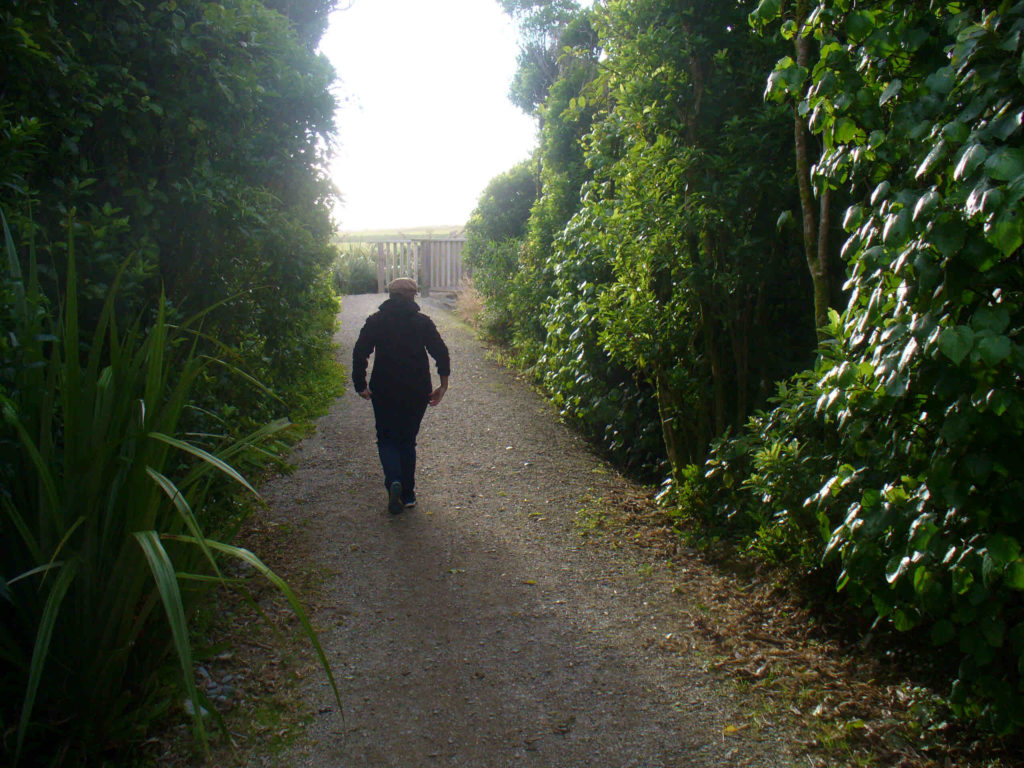
“The maintenance side of things kicks in now. Weed clearing, path making and predator trapping to name a few. The introduction of plants has naturally evolved this lagoon into a bird sanctuary and overall it’s a beautiful looking place.”
Harrison and his wife live very near the project site so it became a personal investment to see their own place be developed for future generations.
“We won’t be around to see the trees grow too tall of course, but it’s really turned into a lovely place to go for walks and see the wildlife.”
LEARN BY DOING
(click here to see IC resources on Learn by Doing)
“To say this project was carried out without hiccups wouldn’t be accurate! What’s a project if it doesn’t face delays and speed bumps, after all. But I think you have to make allowances for that and be prepared to work with what you’ve got, Especially within a small community as we have. I have definitely felt a bit frustrated sometimes…. If you want to make progress you’ve got to focus on the positives.”
On a personal level, Harrison’s involvement in CASRA and this particular project has meant he’s felt a sense of being able to give back to his community by sharing his skills and knowledge, as well as offering some of his free time now that he’s retired.
To see the significant rise in the number of people who stop to enjoy the surroundings has been reassuring for everyone involved.
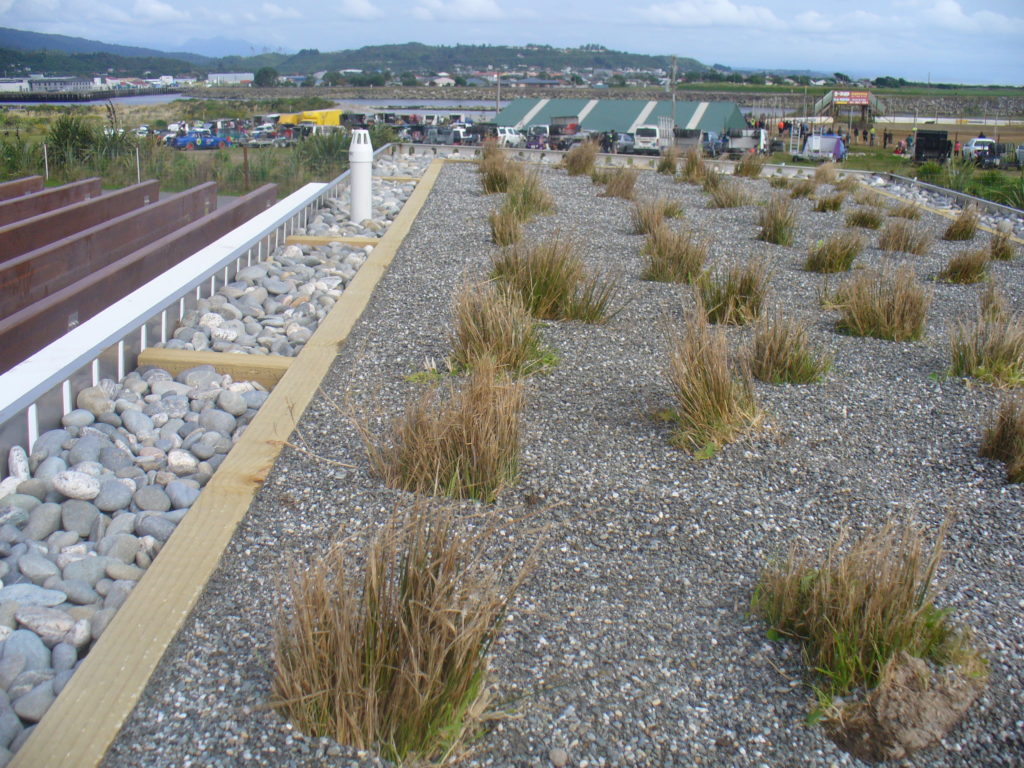
“The combination of walks, water, native plants, birds and whitebait is drawing in the visitors, and that was our original goal. It might have taken a while to get here, but it goes to show that if you can retain a sense of humour and some patience, you’ll get there. It’s worth it in the end.”
Cobden Lagoon is located off the main state highway through Greymouth and is well worth a stop. More information about this project and its whereabouts can be found here.
For resources collated by Inspiring Communities that relate to the processes and principles identified in this story, we encourage you to visit our website.
Te mauri o Uawa – The essence of Tolaga Bay
It’s only 45km north of Gisborne, but Uawa – or Tolaga Bay as it’s more commonly known – is a community which is fiercely proud of its identity. The community-led development mahi that is done in this place is underpinned by a commitment to honour its history and to serve its future generations.
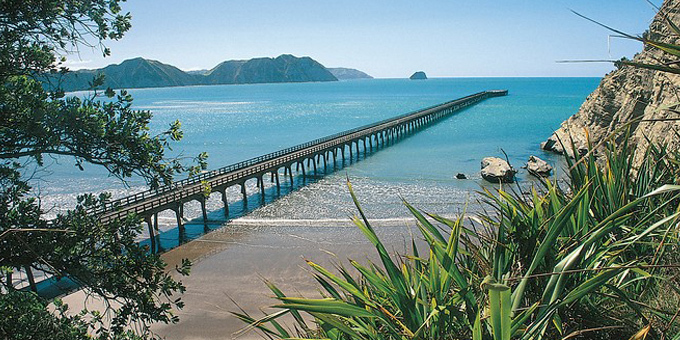
“There’s an oral history of our place. Te Ahikā ki Ōpoutama. It’s a way for our whanau who aren’t here to engage with us. Because this is what makes us feel connected to our land.”
Shanan Gray of Te Aitanga a Hauti Centre of Excellence, formed in 2017, says that understanding Uawa’s rich history is at the heart of the Trust’s purpose. It drives all of what their community does, has led to relationships with Mahina Village in Tahiti – the village of the Tahitian navigator who landed with Captain Cook on the Endeavour in Tolaga Bay in 1769, and has offered a deeper understanding of Uawa’s whakapapa.
It’s also what is behind the Trust’s intention of helping every person in Uawa reach their full potential; by focusing on their peoples’ connection to their pepeha.
“Without a connection to your pepeha, you can’t know yourself. And if someone doesn’t know themselves, how can a person thrive?”
It has been this commitment to their sense of belonging that has led Uawa to consciously carry out their CLD work in a way that resembles the values of their seven marae: they all have their responsibilities, they know they need to work collaboratively together, and they ensure that each and every one of their wider whanau drives their plans.
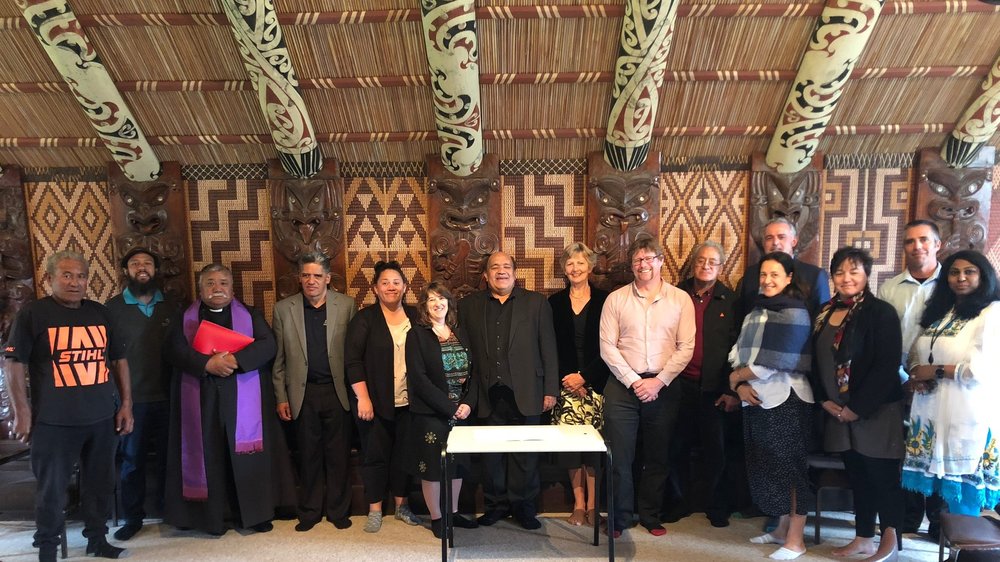
GROW COLLABORATIVE LOCAL LEADERSHIP
The population of Uawa is just 900, and with seven marae there were plenty of people willing to step into a leadership role within the initiatives that the Trust runs. However, Shanan explains that while someone does need to take charge, everyone is encouraged to have a voice.
“We have certain people who lead projects but the idea is that there is no hierarchy.”
Representation of each of Uawa’s marae is important, however they work together for collaborative groups such as the Uawa Sports Club, Golf Club, Bowling Club and the Surf Lifesaving Club. Representatives of each marae meet on a monthly basis to talk about each club, each marae and the wider organisation’s aspirations. Information is then fed into the Community Plan by Shanan who also acts as a representative for the entire Te Aitanga a Hauiti Trust.
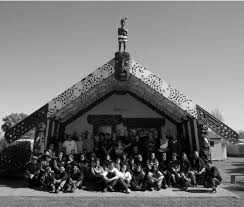
GROW FROM SHARED LOCAL VISIONS
The Trust worked to develop programmes that suited various ages, and that all served more than one purpose: skills development and connection to te whenua.
As well as a focus on the two local primary schools being identified places to foster interest from a young age, Te Aitanga a Hauiti facilitated a community survey which collected more than 90 responses. These responses helped the Trust to make decisions on what programmes and initiatives would be helpful in their place. Interestingly, safety was a main contender, and therefore the following additional programmes were created:
- Water safety: skills in and around the water and with waka ama
- Youth leadership: giving rangatahi a taste of what life might be like after they leave school
- Kapa haka: a connection to Uawa’s waiata and surrounding iwi, as well as development in singing and performing
- Ti ahi ka (our story, our voice, our place): to keep the home fires burning, creating connection and empowerment. This has included unveiling a Pō in the main street of Uawa, writing an e-Book about the discovery of human remains on the Pa in one of the school’s grounds, and a dancing competition called Dancing with the Pa because there are so many keen dancers in Uawa
“The main goal with this is that we’re always looking ahead and forward to new ideas and ways to connect with our mana.”
WORK WITH DIVERSE PEOPLE AND SECTORS
“One of our most important community-led development projects has been the Uawa Nui Sustainability Project, which is something that’s not going to really have an end date because it’s about looking after the assets we have.”
With the collaboration and advice of environmental scientists, a plan has been developed to restore the Uawa river catchment, an area which was gravely affected by damaging floods in 2018.
Seeking advice from experts in their fields gave Uawa a chance to make plans around what was best for their place.
“There is always room for another voice at our table.”
Despite a positive response from the community to develop CLD programmes, this mahi has not come without its challenges. Because of Uawa’s commitment to its tangata whenua, they wanted to make sure that every one of their wider community members had been consulted; that it was an inclusive approach and that no one was being missed out.
“We stretched ourselves in the community to engage, meet and discuss this process with community groups. This required a significant amount of time and patience which felt difficult at times because we didn’t think we were progressing things fast enough.”
But, as Shanan says, collaboration and consultation is so important. “There are so many people in our community who are representatives on different boards and groups. It’s about working strategically and encouraging those who are also working with our leadership group to always think about how we can make this more of a CLD approach. My advice would be to take your time with planning and ensure you haven’t missed anyone out. We asked ourselves ‘who else?’ a lot.”
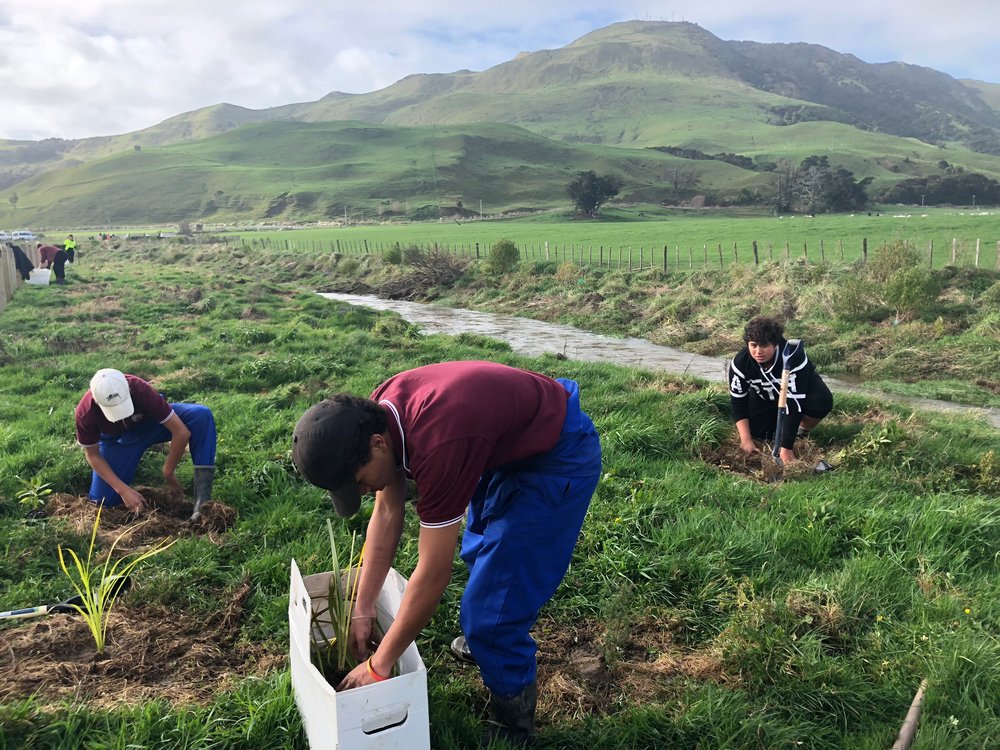
“The purpose of our sustainability projects is to achieve long term economic and social benefits and we wanted to learn about the best ways to do that. Now that we have a plan we’re teaching it to our children in school so that they can understand the importance of looking after our land and our river.”
And this really is the essence of Uawa. What drives them to encourage their people to flourish is all about developing a sense of self, be connected to their surroundings, and to instinctively pass their knowledge and mana onto future generations.”
“Relationships with whanau, iwi and hapu are key. Allow the opportunities to arise with your community. Empower their voices! Validating and acknowledging their opinions is our way of insuring our community’s future.”
“We have a succession plan for our young people to pass it on. We want to inspire our people to stay connected to our land and to look after it.”
To learn more about what Te Aitanga a Hauiti Centre of Excellence do, visit their website.
AgeConnect: looking out for our older generations
“This is not just about nice fluffy stuff, this is about health and wellbeing.”
Caroline Budge, Manager of Age Concern Nelson Tasman, is passionate about giving a voice to the growing older population of New Zealand.
Based in Nelson, she heads up the region’s branch of the nationwide organisation.
“Nelson is up there in terms of its ageing population. Its climate and quieter pace attracts people for retirement.”

According to international, as well as national, research social isolation and loneliness has a huge impact on physical and mental wellbeing. ““There’s research to suggest that chronic loneliness is akin to smoking 15 cigarettes per day. Think of the impact that’s having on people’s wellbeing and on our health system. Ultimately the goal is to keep more older people away from the doctors and hospital because we can do something about it.”
Caroline and her team are doing exactly that.
“It started with companionship. We offer a visiting service using volunteers to go to people’s homes. Mostly they are people in their 80s and 90s who are stuck at home. But a couple of years ago we started thinking about those who feel disconnected in some way but who aren’t maybe old, or who want to be connected and out and about in the community.”
Caroline explains that loneliness isn’t something that happens just for older people – it can happen at any age. However the options for younger people to seek help and integrate into their communities are much more accessible.
WORK WITH DIVERSE PEOPLE & SECTORS
“So we ran a test. We asked our community what they thought, and we had a huge response.”
Reaching out to local health professionals, councillors, community leaders and business owners, Caroline and her team were hoping to get a wide range of interest and input into what Age Concern Nelson Tasman could do next.
So huge was the response to the first invite-only meeting, with a turnout of 60 people, that they hosted a second meeting – this time opening it up to the wider community. That meeting attracted 100 interested people of varying ages and occupations.
GROW FROM SHARED LOCAL VISIONS
“From there we figured out who was really interested in getting involved, identified our top issues to address, came up with themes, and set up working groups. Then we realised it was enough work to create a new job. We funded and then recruited a position to help support collaboration and make things happen. Therefore AgeConnect Nelson Tasman was born. At the time we had no idea what this person was going to do but knew that it was about working with others to tackle social isolation and loneliness and that some exciting innovations would occur.”
LEARN BY DOING
With people on board and ideas in hand, the team’s priority was to put things into action. One of the first initiatives to get off the ground was Tea & Tech – a regular learning session between residents of a local retirement village and teenagers from the Nelson Youth Council. The idea was to help older people on a 1:1 basis with their digital devices – smartphones, tablets and PCs. They could ask practical questions that would be answered by knowledgeable teenagers, who would in turn get to practise their training and explanation skills.
“When instructions say ‘just go to our website’ it becomes a huge barrier for anyone who doesn’t know how to use a website. We hoped it would be practical learning for everyone involved but what we found was that connections were made and bonds were formed. The teenagers showed real leadership and commitment, and older residents got much more than digital skills out of it too. Often what the older people want is something really simple – they might not really know what wi-fi is, for example, or how to share photos. The results are quite magical.”
BUILD FROM STRENGTHS
Two years on, AgeConnect is busier than ever – facilitating new initiatives and encouraging the community to take on ‘doing the doing’. Tea & Tech has now been taken up by three local high schools, two other retirement villages, with plans to run them in the community as well.
Pet Connect is another initiative that has been very successful.

Mostly it’s dogs that their volunteers take in to visit the residents, but there has been a surprise superstar. “Tyson the Clydesdale horse, whose owner is a local woman who’s happy to volunteer her time, seems to be able to sense something in people. He’s huge, but he walks down the corridor of the rest homes. It’s amazing. He gently nuzzles people and seems to know who needs the most attention.”
For some residents of care homes who’ve spent their lives on a farm, and are now living in the city with next to no animal contact, Caroline explains how this initiative has brought incredible joy to those who’ve missed the smell and presence of animals in their lives.
“It’s moved people to tears. It’s just a short few moments that they get with Tyson but the joy it brings to some residents is medicine itself.”
Something else that was able to be put into action quickly was the connection between the need for community transport for older people, and the number of existing vans and volunteers who were available to help. This has been a quick win-win for all involved.
GROW COLLABORATIVE LOCAL LEADERSHIP
Caroline says it’s been incredibly encouraging to see the way in which the wider community has embraced these and other initiatives.
“The idea behind what we’re doing is to get initiatives off the ground and help facilitate them, then we work with the community to take charge and run with them.”
As well as focusing on specific initiatives such as Pet Connect and Tea & Tech, AgeConnect also developed what they call AgeConnect Champions – anyone in the community, whether an individual, group or business – who are doing their bit for older people.
“This might be a sticker on the window to let people know they’re age friendly, or a chair to sit down on while they wait somewhere. Things that aren’t mainstream, but that make all the difference to someone’s day when they’ve made the effort to venture into town.”
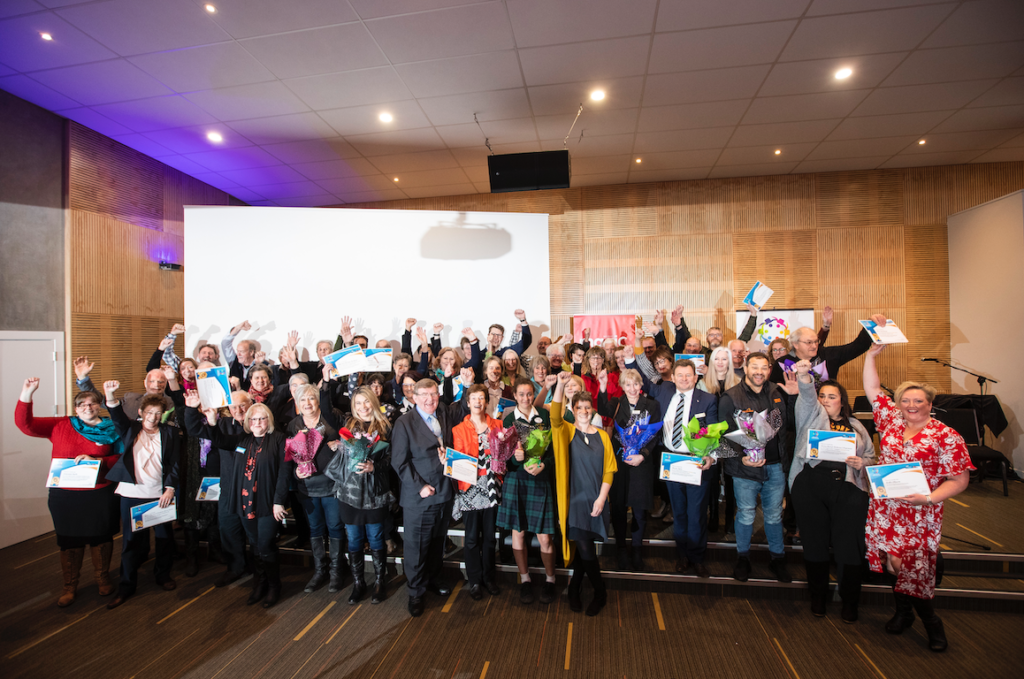
They have also established an annual awards ceremony for nominated Champions, recognising things such as being physically accessible, offer great customer service, or promoting intergenerational activities. Just recently they recognised 150 Champions at their Awards, sharing stories of kindness and examples of great community work.
By encouraging local businesses to get on board and be recognised for their efforts, Caroline says it has begun to instil an expectation that local businesses should be prepared to do what they can for the region’s ageing population.
Not only to encourage inclusivity among the retail and service industry, but to ultimately have a positive impact on someone’s life.
AgeConnect is a concept that is now being picked up by other communities and Age Concern branches which, given New Zealand is home to many communities that are similar to Nelson, is a brilliant example of community-led development in action.
